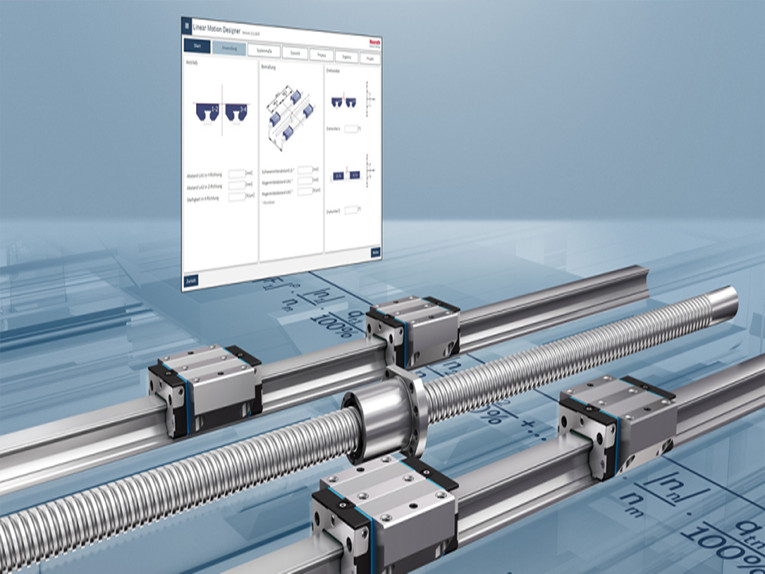Technical summary
Linear motion is an area of motion control encompassing several technologies including linear motors, linear actuators, and linear rolling guides and bearings, among others.
Linear motors — an accurate option
Traditional linear motors are basically a permanent magnet rotary motor rolled out and laid flat. It’s as if the stator and rotor were cut along a radial plane and then unrolled so that they could provide linear thrust. When the stationary part of the motor is energized, it causes motion in the moving part that contains some kind of conductive material.
Linear motor benefits include high speeds and fast response times, high precision and stiffness, and because there are no mechanical transmission components the elimination of backlash.
On the down side, linear motors can be more expensive than other traditional solutions. They also demand better response from controllers such as increased bandwidth and higher update rates. Linear motors also typically cannot produce as much force as some other types of solutions such as ball screws. Another issue may be heating from I2R losses, which may require special cooling considerations.
Choosing the best linear motor for an application involves a number of factors including force and thermal considerations, loads on bearings, and space and clearance considerations.
Early linear motors were cylindrical. In these motors, the forcer is cylindrical in construction and moves up and down a cylindrical bar that houses the magnets. U-channel types of linear motors have two parallel magnet tracks facing each other with the forcer between the plates. The forcer is supported in the magnet track by a bearing system. Lastly there are flat type linear motors, which can be one of three different types: slotless ironless, slotless iron, and slotted iron.
Linear actuators — integrated setups with traditional motion components
Linear actuators essentially produce linear motion. Sometimes the primary source of motion is non-linear or rotary, such as a motor. In this case, some other mechanical means such as belts, pulleys, chains or other mechanical components convert the rotary motion to linear motion. Other types of linear actuators produce linear motion on their own, such as through fluid (hydraulic or air) pressure. Common linear actuators include mechanical, electro-mechanical, hydraulic, pneumatic and piezoelectric.
A rotary source linear actuator typically uses an electric motor to provide its input energy. This actuator can use a lead screw to turn the motor’s rotational motion into straight-line motion.
The best fit for the application depends on factors such as required output, size and power requirements. There are several important factors to consider when choosing a linear actuator. First is determining the stroke or length of motion required. Next, how much force is required of the actuator? That is, what is the weight of the object the actuator will need to move? How will the actuator be mounted—horizontally or vertically?
Linear actuators are used in a wide array of both industrial applications such as material handling equipment and robotics as well as everyday consumer applications such as appliances and in computer equipment such as printer heads and scanners.
Linear motion rolling guides — for OEM design flexibility
Linear rolling guides are not actuators themselves but the mechanical component that guides a linear motion, which could be a rail or a shaft connected to some type of actuating device. Rolling guides for linear motion applications can help reduce friction in machines. They’re used in various fields ranging from advanced semiconductor manufacturing devices to large machine tools or construction equipment.
Linear rolling guides come in different forms including linear ways and linear roller ways rail guiding systems and ball spline-based shaft guiding systems.
Important considerations for choosing a linear-motion rolling guide include the load, the static load, the stroke and speed as well as the desired precision and accuracy. Pre-loading may also be required depending on the application requirements. Lubrication is another important consideration, as is any method to minimize contamination of the linear guide system from environmental factors such as dust and other contaminants using bellows or special seals.
Post time: Apr-07-2022








